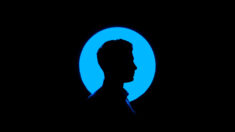Harmony Day is a special celebration held every year in Australia. It’s a day that reminds us how important it is to be kind to everyone, no matter where they come from, what language they speak, or how they look. For kids, Harmony Day is a great chance to learn about different cultures, make new friends, and understand the value of respect and kindness.
This day teaches us that our world is full of people from many backgrounds. By coming together, we can create a more peaceful and happy place for everyone. In this article, we’ll explore what Harmony Day is all about, why it matters, and how kids can enjoy and take part in the celebrations.
What is Harmony Day?
Harmony Day is celebrated on March 21st every year in Australia. It began in the year 1999 and was created to promote the message that “Everyone Belongs.” It is a day that focuses on unity, respect, and a sense of belonging for all people, regardless of their background.
The date, March 21st, is also important because it is the United Nations’ International Day for the Elimination of Racial Discrimination. This means Harmony Day is also about standing up against racism and encouraging people to treat each other equally and fairly.
The color orange is used to represent Harmony Day. It symbolizes communication, meaningful conversations, freedom of ideas, and encouragement of mutual respect. On Harmony Day, many people wear orange clothes or ribbons to show their support for this important message.
Why is Harmony Day Important for Kids?
Kids are the future of our world. When children learn about kindness, respect, and understanding at a young age, they grow up to become caring and responsible adults. Harmony Day helps children to:
- Understand Diversity: Kids learn that everyone is different, and that’s a good thing. Differences in culture, language, food, clothing, and traditions make our world interesting and beautiful.
- Respect Others: Harmony Day encourages kids to treat everyone with respect, no matter where they come from.
- Feel Included: When kids are taught that everyone belongs, they feel more confident and happy. It helps create safe and welcoming schools where everyone feels like part of the team.
- Stop Bullying and Racism: By learning to respect others, kids are less likely to bully or treat others unfairly. Harmony Day sends a strong message that racism and unkind behavior are not okay.
Activities to Celebrate Harmony Day with Kids
There are many fun and educational ways that kids can celebrate Harmony Day. Here are some great ideas:
- Cultural Dress-Up Day
- Kids can wear traditional clothes from their culture or another culture they admire. It’s a fun way to see and appreciate different styles from around the world.
- Kids can wear traditional clothes from their culture or another culture they admire. It’s a fun way to see and appreciate different styles from around the world.
- Multicultural Food Festival
- Children can bring food from their own cultures to share with friends. This helps kids explore new tastes and learn about food traditions from different countries.
- Children can bring food from their own cultures to share with friends. This helps kids explore new tastes and learn about food traditions from different countries.
- Art and Craft Projects
- Create a mural using handprints with messages about kindness and diversity.
- Make flags, posters, or drawings that represent different countries.
- Create a mural using handprints with messages about kindness and diversity.
- Storytelling and Books
- Teachers and parents can read books about cultural diversity and inclusion. Stories are a great way for kids to understand what it’s like to live in different parts of the world.
- Teachers and parents can read books about cultural diversity and inclusion. Stories are a great way for kids to understand what it’s like to live in different parts of the world.
- Music and Dance
- Listen to music from different countries and try traditional dances. It’s a fun way to learn about other cultures through sound and movement.
- Listen to music from different countries and try traditional dances. It’s a fun way to learn about other cultures through sound and movement.
- Language Fun
- Teach kids simple words like “hello” or “thank you” in different languages. This shows them that every language is special and worth learning.
- Teach kids simple words like “hello” or “thank you” in different languages. This shows them that every language is special and worth learning.
- Friendship Activities
- Organize games and activities that help children make new friends. This teaches them how to be inclusive and kind to others.
- Organize games and activities that help children make new friends. This teaches them how to be inclusive and kind to others.
- Classroom Discussions
- Have talks about what makes us different and what makes us the same. Children can share stories about their families and cultures.
Resources for Parents and Educators
Parents and teachers play an important role in helping kids understand and celebrate Harmony Day. Here are some useful resources:
- Official Harmony Week Website
- The official website offers posters, coloring sheets, lesson plans, and activity ideas.
- The official website offers posters, coloring sheets, lesson plans, and activity ideas.
- Books on Diversity
- Whoever You Are by Mem Fox
- All Are Welcome by Alexandra Penfold
- Same, Same But Different by Jenny Sue Kostecki-Shaw
- I’m Australian Too by Mem Fox
- Whoever You Are by Mem Fox
- Videos and Cartoons
- YouTube and educational platforms have age-appropriate videos that explain what Harmony Day is and why it’s important.
- YouTube and educational platforms have age-appropriate videos that explain what Harmony Day is and why it’s important.
- Activity Packs for Classrooms
- Teachers can download printable activities like word searches, coloring pages, and diversity quizzes.
- Teachers can download printable activities like word searches, coloring pages, and diversity quizzes.
- Cultural Events and Workshops
- Local community centers and schools often hold events like performances, food stalls, and exhibitions. Parents can take children to experience the celebration in a larger community setting.
- Local community centers and schools often hold events like performances, food stalls, and exhibitions. Parents can take children to experience the celebration in a larger community setting.
- Conversation Starters
- Parents can use simple questions like “What does respect mean to you?” or “How can we make our friend feel included?” to start meaningful discussions at home.
Conclusion
Harmony Day is more than just a fun event; it’s a time to reflect on how we treat others and how we can help build a better, more respectful world. For kids, it’s a valuable opportunity to learn that every person is important and worthy of kindness. When children understand and celebrate diversity, they help make schools and communities more welcoming for everyone.
Through colorful clothes, tasty food, creative art, and thoughtful discussions, Harmony Day helps kids see that differences are not something to fear—but something to celebrate. Let’s continue teaching children the power of harmony, respect, and love—not just on Harmony Day, but every day.
















